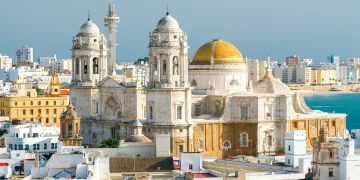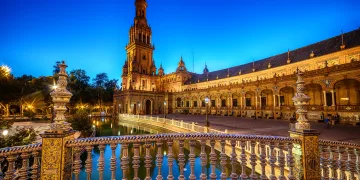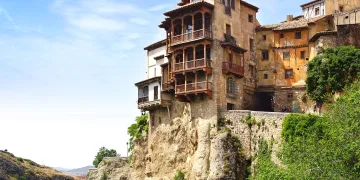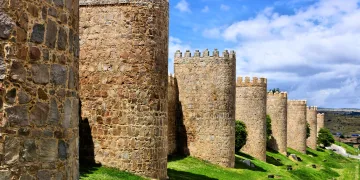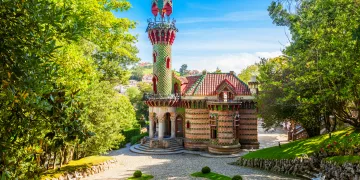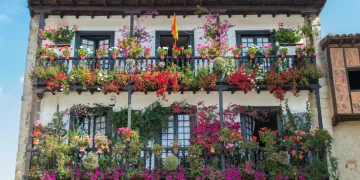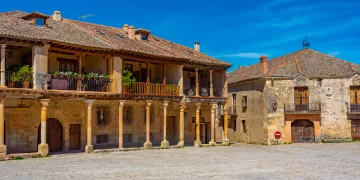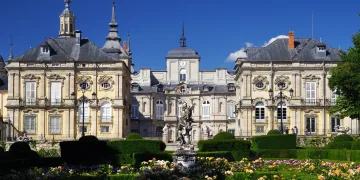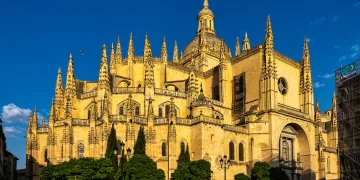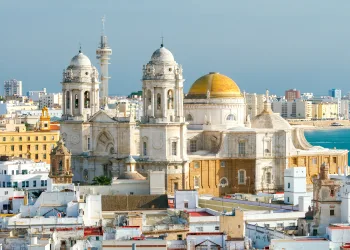As an ardent travel enthusiast or a history buff, a Cordoba travel experience should be on your bucket list. The city of Cordoba, a gem in the crown of Andalusia, Spain, is a harmonious blend of diverse cultures and a testament to the architectural grandeur of the past. The star of Cordoba’s historical and cultural landscape is undoubtedly the Mesquita. This guide aims to unravel the rich history of Mesquita and why it should be a part of your Spain trip.
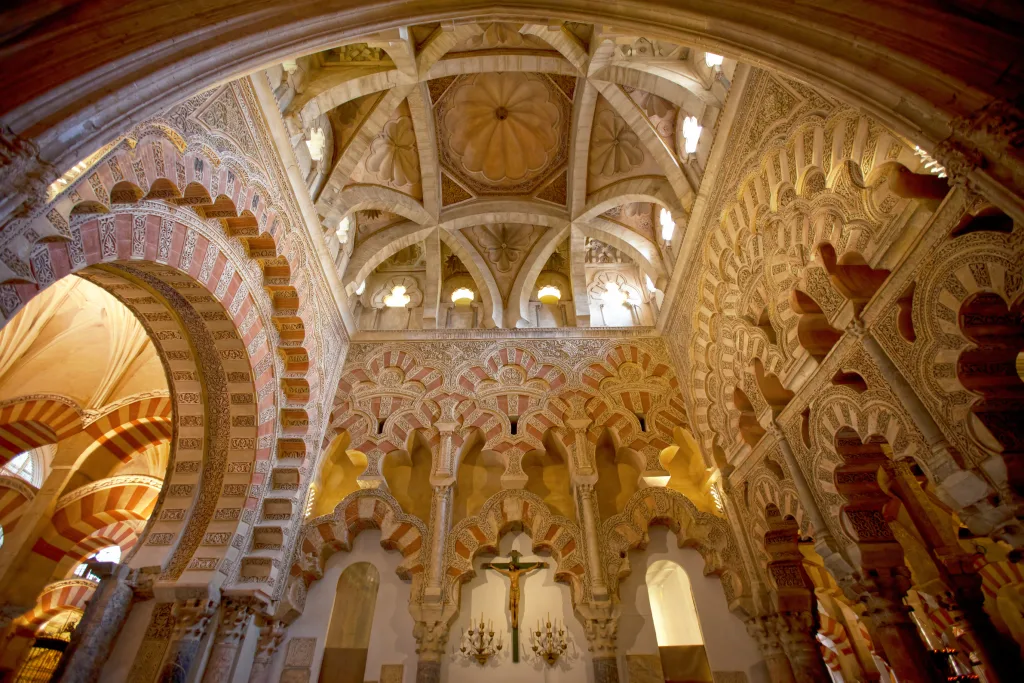
Photo Cordoba Mezquita © G00b | Dreamstime.com
Cordoba: A Melting Pot of Cultures
Cordoba, nestled in the southern region of Spain, is an industrial hub, a scientific center, and a globally recognized tourist hotspot. However, the city’s charm lies in its history, which paints a picture of a grand civilization where Muslims, Jews, and Christians coexisted harmoniously.
More than a millennium ago, Cordoba was Europe’s largest city, housing over half a million inhabitants. The city’s heritage effortlessly weaves the cultural threads of Roman, Arab, and Jewish cultures, making Cordoba a unique historical and cultural tapestry.
When to Visit Cordoba
Though Cordoba beckons travelers all year round, it’s crucial to plan your Spain trip considering the city’s climate and various events. Here’s a quick rundown of the city’s calendar of events:
- January: Kickstart the year with a vibrant parade led by the Three Kings on January 5th. The following day, indulge in a traditional yeast ring-shaped cake, Roscon de Reyes, a local delicacy.
- March to June: This period marks the blooming of orange trees, filling the city with a mesmerizing aroma. Street kiosks offer fresh snails prepared in various ways.
- Easter: Celebrate the Holy Week with the Spanish, witnessing mysteries, self-flagellation of martyrs, and mystical processions.
- May: Cordoba welcomes summer with various fiestas, including the festival Cruzes de Mayo, Fiesta de Los Patios, and Feria de Cordoba.
- July to September: Enjoy outdoor cinema screenings after sunset and the International Festival of Guitar Music.
- December: Ring in the New Year the Spanish way. As per tradition, consuming 12 grapes at the stroke of midnight brings luck and prosperity.
Pro Tip: If you are not accustomed to scorching heat, avoid visiting Cordoba in summer when the temperature can rise above 45 degrees Celsius.
Exploring Cordoba: The Best Approach
Cordoba is a city that demands time to explore. If you have more than a day, consider using a tourist bus on the first day, followed by a walking tour on the second day. The tourist bus, priced at €22, covers 17 major attractions. For a one-day visit, a walking tour around the historic Jewish quarter, Juderia, is recommended.
For more details on the tourist bus, visit the Cordoba City Sightseeing Bus website.
Must-See Attractions in Cordoba
Cordoba’s historic city center was inscribed on the UNESCO list in 1984 and 1994, reflecting its significant cultural heritage. The city’s period of greatest glory began in the 8th century after the Moorish conquest. Numerous mosques, palaces, and public buildings were built, rivaling the splendors of Constantinople, Damascus, and Baghdad.
The Mesquita-Cathedral of Cordoba
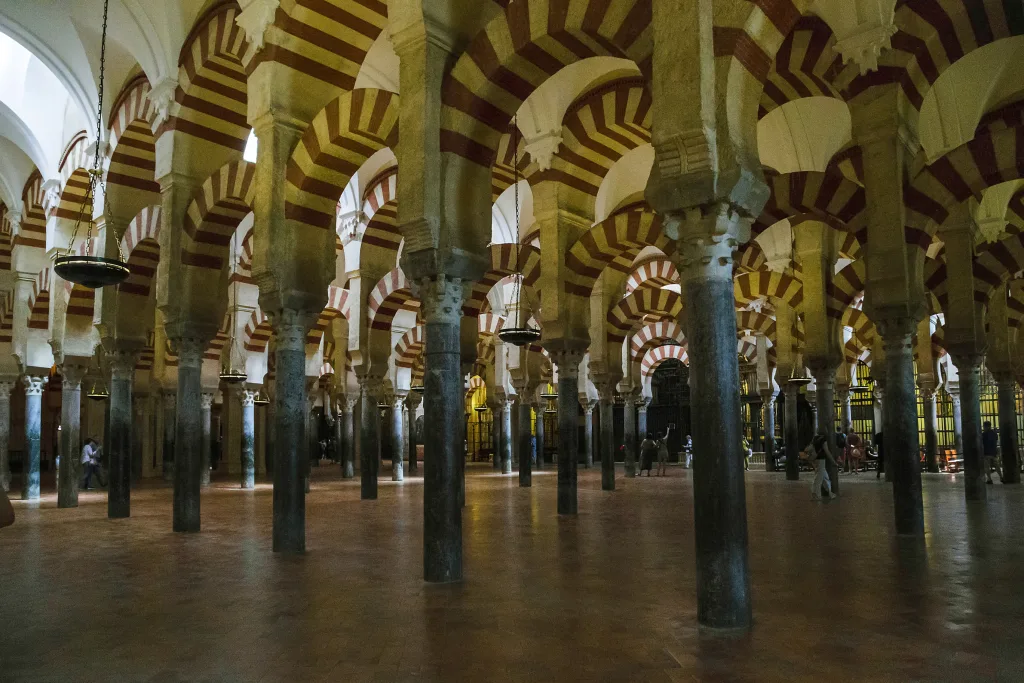
Photo 130318309 © Igor Abramovych | Dreamstime.com
The Mesquita, also known as the Great Mosque of Cordoba, is a masterpiece of medieval Islamic architecture. This mosque-turned-cathedral is one of the most famous mosques globally and the largest former mosque in Europe. Its fame stems from its size and the iconic hall with the “forest of columns.” The mosque houses over 850 columns made of marble, granite, and jasper, and spans an area of about 23,000 sqm.
Visiting hours for the Mesquita vary with the seasons. During spring and summer (March to October), it’s open between 10.00 a.m. and 7.00 p.m. from Monday to Saturday, and between 8.30 – 10.30 a.m. and 2.00 – 7.00 p.m. on Sundays and public holidays. In autumn and winter (November to February) sightseeing is possible from 10.00 a.m. to 6.00 p.m., Monday to Saturday, and between 8.30 – 10.30 a.m. and 2.00 – 6.00 p.m. on Sundays and holidays.
Admission tickets are priced at €13 for an adult and €7 for teenagers. Children under the age of 10, residents of the city, and senior cardholders have free admission.
For more information about the mosque, visit the Great Mosque website.
The Alcázar of the Christian Monarchs
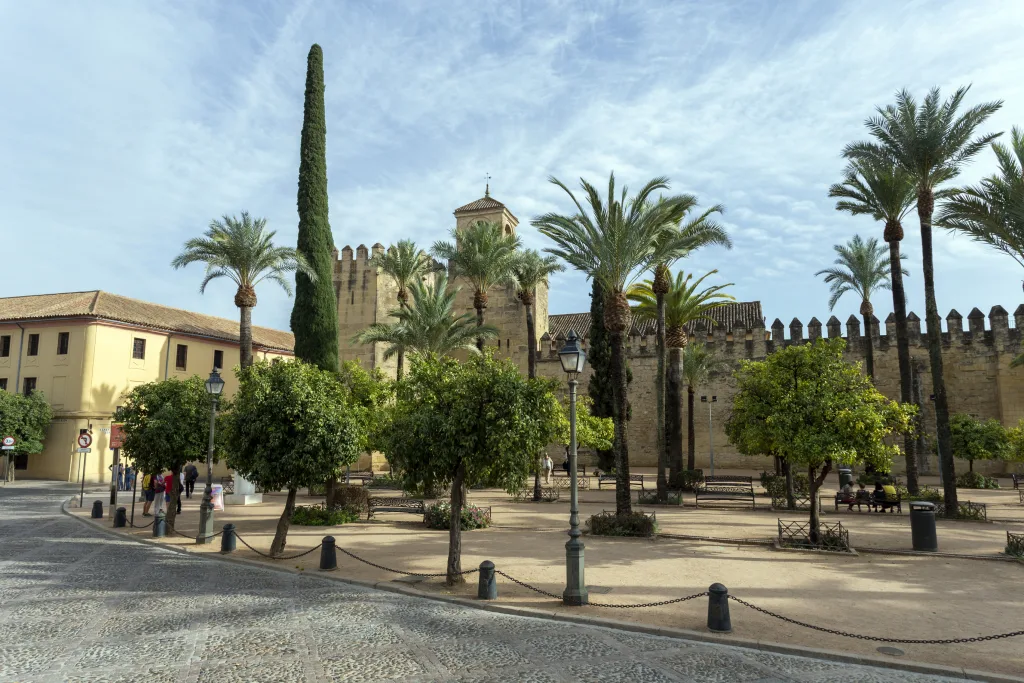
Photo Skovalsky | Dreamstime.com
The Alcázar of the Christian Monarchs, a castle built on the foundations of a Roman fortress and an Arab palace, is a must-visit. It was built in 1328 by Alfonso XI, the king of Castile and Leon. The castle’s interiors are not as interesting as its gardens, which are landscaped in the Arabic style.
Visiting hours: Tuesday to Friday from 8.30 a.m. to 7.30 p.m., and from 8.30 a.m. on weekends to midnight. Entrance ticket: €4.5.
For more information about the complex, visit the Alcazar website.
Casa Andalusi
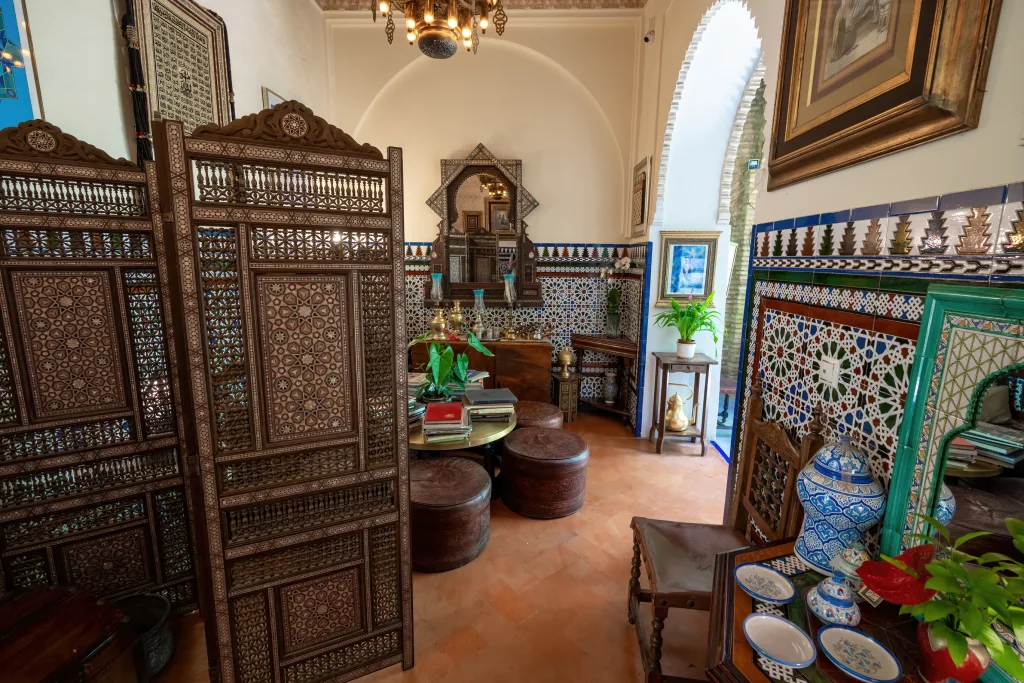
Photo 280519289 © Diego Grandi | Dreamstime.com
The House of Andalusia, located in the heart of the Jewish quarter, Juderia, is a must-visit. It is a museum-house that takes visitors back to the time of the caliphate. The house showcases the Andalusian style mixed with Eastern styles and Arabic symbols.
Admission tickets are priced at €4. The museum is open daily from 9.00 a.m. to 7.30 p.m.
The Roman Bridge
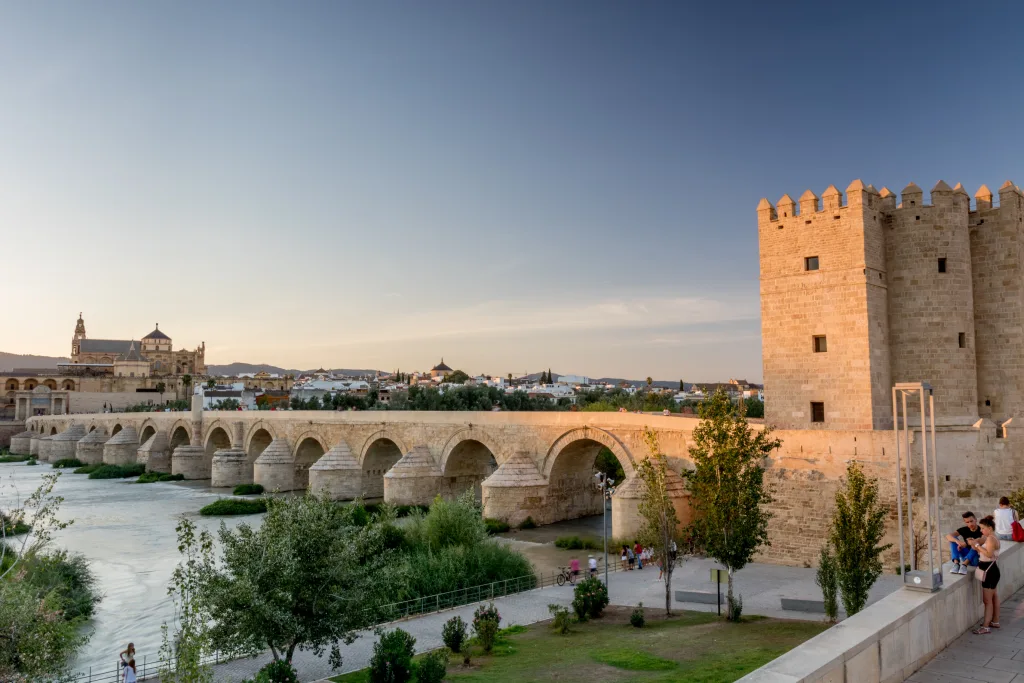
Photo 103699683 © Filippo Arena | Dreamstime.com
The Roman Bridge, built by the Romans at the beginning of the 1st century BC, is a notable attraction. It offers a beautiful view after dusk when it’s illuminated. On both ends of the bridge, you’ll find the Calahorra Tower and the Bridge Gate. The Calahorra Tower houses the “Al-Andalus Museum,” showcasing the daily life of Moorish Andalusia.
Visiting hours for the Al-Andalus Museum: during winter (from October to April) it is open from 10.00 a.m. to 6.00 p.m. From May to September, the museum is open from 10.00 a.m. to 2.00 p.m. and from 4.30 p.m. to 8.30 p.m. Entrance ticket: €4.5.
For more information about the museum in the defensive tower, visit the Calahorra Tower website.
Juderia
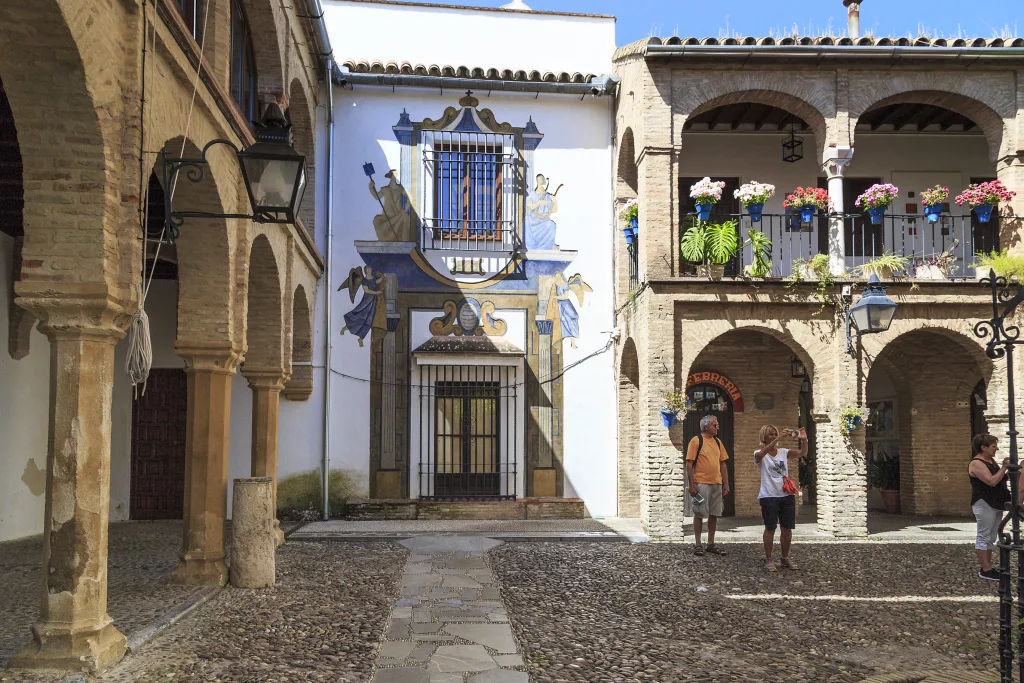
Juderia, the former Jewish quarter, is the perfect place to wander around and discover the city’s beauty. It is home to the only surviving synagogue of Andalusia from the 15th century. You’ll also find several old, restored houses from the 12th – 14th centuries, which have been transformed into museums.
Other Attractions in Cordoba
Apart from the attractions mentioned above, Cordoba offers several other places to explore if you have more than a day. Here are a few recommendations:
- The Victoria Market (Mercado Victoria) operates in a 15th-century hall with a cast-iron construction. It serves as a venue for regular concerts and culinary workshops.
- Plaza del Potro is famous due to Cervantes, who wrote fragments of “Don Quixote” in the “Inn of the Colt” (Posada del Potro). Today, the building houses the Flamenco Center.
- The Roman temple is a 1st-century building erected in honor of Emperor Augustus. Some fragments of the original temple, including parts of the altar and three capitals crowning the columns, have been preserved.
Conclusion
A Cordoba travel experience is enriched by the city’s historical and cultural diversity. The city’s primary attraction, the Mesquita, is a testament to the architectural grandeur of the past. This guide aims to help you plan your Spain trip, ensuring that the Mesquita and other attractions of Cordoba are on your itinerary.

